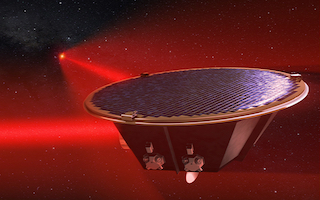Michele's blog
LISA is a mission!
2017/6/20
On June 20, 2017, ESA's Science Programme Committee selected LISA as the third large mission in the ESA science program. LISA will now enter a detailed study phase, the first step in a long gestation culminating with launch around 2034.
LISA had been on hiatus since 2011, when NASA withdrew from a joint LISA project with ESA. The quest to make LISA a reality was reinvigorated by LIGO's GW150914 discovery, marking the beginning of gravitational-wave astronomy, as well as the overwhelming success of LISA Pathfinder, an ESA-NASA mission to test LISA's crucial technologies in space. NASA promised a minor (20%), but important contribution, which will allow U.S. scientists to participate fully in LISA science.
Personally, I am overjoyed that the mission to which I dedicated ten years of my work is again on the path to becoming a reality. The LISA science payoff may eclipse even the bounty of LIGO discoveries expected over the next ten years; Frank Wilczek included it in his list towards answering fundamental physics questions in the next 100 years. Thus, although in the last few years I have been busy on helping LIGO extract information from its discoveries, and on pushing pulsar timing arrays toward their first detection, LISA is back in my portfolio, and in my days. I was proud to be listed among the authors of the LISA proposal to ESA, and I will be working on the science- and data-analysis infrastructure needed to make the most of the LISA observations.
© M. Vallisneri 2014 — last modified on 2017/6/20
